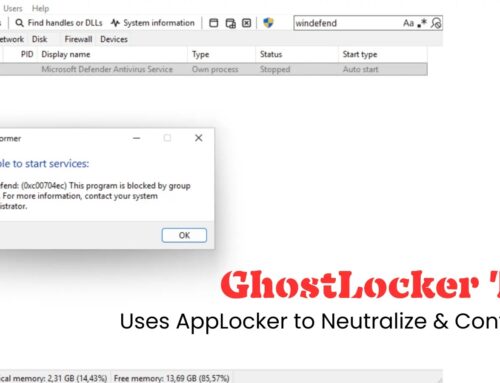
Kerberoasting Detections: A New Approach to a Decade-Old Challenge
Kerberoasting Detections: A New Approach to a Decade-Old Challenge
For over a decade, cybersecurity experts have grappled with the persistent threat of Kerberoasting. Despite its long tenure in the attacker’s toolkit, this highly effective attack continues to bypass many conventional security defenses. Why does a technique so well-known still pose such a challenge? The answer lies in the limitations of traditional detection methods, which often rely on brittle heuristics and static rules. These outdated approaches frequently generate high volumes of false positives or, worse, completely miss the subtle, “low-and-slow” attacks that define sophisticated Kerberoasting campaigns. This post delves into why this attack remains prevalent and explores novel detection strategies poised to finally turn the tide.
Understanding the Kerberoasting Threat
Kerberoasting is a post-exploitation technique used by attackers to obtain Windows domain user credentials. It leverages legitimate Kerberos functionalities to request Service Principal Names (SPNs) from a Domain Controller. An SPN is essentially a unique identifier for a service instance, and it allows the Kerberos authentication process to happen. When a service account (or any user account configured with an SPN) is created, a hashed password is associated with it. Attackers exploit this by requesting service tickets for SPNs, which the Domain Controller dutifully provides. These tickets contain a hash of the service’s password, encrypted with the Domain Controller’s inter-realm key.
The crucial part of the attack is that the portion of the ticket containing the service password hash is encrypted using standard cryptography that is publically known. Crucially, the encryption key is derived from the service account’s password. An attacker, once in possession of this service ticket, can then perform an offline brute-force or dictionary attack against the extracted password hash to recover the plaintext password. Because service accounts often have weak or default passwords that are rarely changed, they become prime targets for this offline cracking process.
The Kerberoasting attack itself generates seemingly legitimate Kerberos traffic, making it difficult for signature-based IDS/IPS systems to identify. Furthermore, the attacker doesn’t need elevated privileges to request SPN tickets, making it a powerful technique for privilege escalation within an compromised network segment.
Limitations of Traditional Kerberoasting Detections
The primary reason Kerberoasting continues to evade detection is the inherent flaw in how existing security solutions attempt to identify it. These methods typically rely on:
- Brittle Heuristics: Rules based on observed attack patterns, such as a large number of SPN requests from a single source in a short period. While these can sometimes catch obvious attacks, they are easily bypassed by sophisticated adversaries who spread out their requests or use multiple compromised endpoints.
- Static Rules: Fixed thresholds for certain Kerberos events. These often lead to either too many false positives (alerting on legitimate network activity) or too many false negatives (missing actual attacks that fall below the arbitrary threshold).
- Lack of Contextual Understanding: Traditional systems often lack the ability to correlate disparate events across a network, making it difficult to spot “low-and-slow” attacks where an attacker makes only a few SPN requests over an extended period to avoid triggering basic alerts.
This reliance on simplistic indicators means that defenses are easily circumvented by attackers who understand these limitations and adapt their techniques accordingly. The “noise” of legitimate Kerberos traffic further complicates the matter, allowing malicious activity to blend in seamlessly.
A New Approach to Detection
The future of Kerberoasting detection lies in moving beyond static rules and embracing more dynamic, context-aware methodologies. The referenced article from The Hacker News highlights the need for a shift towards analyzing potential attack patterns within highly variable Kerberos traffic. While the precise technical details are still emerging, a robust new approach would likely incorporate:
- Behavioral Analytics: Profiling normal Kerberos request patterns for users and services. Deviations from this baseline, even subtle ones, could flag suspicious activity. For instance, a user account suddenly requesting an unusually high number of SPNs for services they don’t typically interact with would be a strong indicator.
- Machine Learning and AI: Training models on vast datasets of both legitimate and malicious Kerberos traffic to identify complex, non-obvious attack signatures. ML can detect anomalies that human-defined rules would miss, adapting to new attack variations over time.
- Graph Databases for Relationship Mapping: Visualizing and analyzing the relationships between users, services, and requested SPNs. This can help identify unusual access patterns or the abuse of trust relationships.
- Threat Intelligence Integration: Continuously updating detection engines with the latest TTPs (Tactics, Techniques, and Procedures) used in Kerberoasting attacks.
- Contextual User and Service Information: Enriching Kerberos logs with Active Directory information to understand the user’s role, their typical access patterns, and the criticality of the services they are requesting SPNs for.
By moving towards these advanced analytical techniques, security teams can develop a more resilient defense against Kerberoasting that adapts to the attacker rather than being rigidly defined by outdated assumptions.
Remediation Actions and Mitigations
While new detection approaches are crucial, proactive measures remain the first line of defense. Here are key remediation actions to reduce your organization’s Kerberoasting risk:
- Strong, Unique Passwords for Service Accounts: This is arguably the most critical mitigation. Ensure all service accounts (and any user accounts with SPNs) use long, complex, and unique passwords (at least 25 characters) that are regularly rotated. This makes offline password cracking significantly harder. Educate administrators against using default or easily guessable passwords for service accounts.
- Least Privilege and SPN Management:
- Avoid assigning SPNs to regular user accounts unless absolutely necessary.
- Limit the number of accounts with SPNs to only those that genuinely require them.
- Review and audit existing SPNs regularly to identify unnecessary ones.
- Monitor Kerberos Event Logs: Specifically, monitor Event ID 4769 (A Kerberos service ticket was requested). While raw volume can be noisy, combining this with other indicators (source IP reputation, user behavior, service criticality) can be effective.
- Network Segmentation and Access Control: Isolate sensitive services and their associated service accounts into separate network segments. Implement strict access controls to limit which users and devices can even attempt to request SPNs.
- Endpoint Detection and Response (EDR): EDR solutions can help detect the tools and scripts commonly used by attackers to perform Kerberoasting on compromised endpoints (e.g., Mimikatz, Rubeus).
- Implement Multi-Factor Authentication (MFA): While MFA doesn’t directly prevent Kerberoasting (as the attack targets the service account’s hash, not an interactive login), it significantly reduces the impact if those credentials are later used for interactive access to other resources.
- Regular Security Audits and Penetration Testing: Conduct frequent audits of your Active Directory environment and perform penetration tests that specifically include Kerberoasting simulations to identify weaknesses before attackers do.
Tools for Detection and Mitigation
| Tool Name | Purpose | Link |
|---|---|---|
| BloodHound | Active Directory enumeration, identifying attack paths including Kerberoasting attack vectors. | BloodHound Enterprise |
| Rubeus | Post-exploitation Kerberos interaction, including Kerberoasting (attacker tool, but useful for defensive testing). | Rubeus GitHub |
| Mimikatz | Credential dumping and Kerberos ticket manipulation (attacker tool, used for red teaming). | Mimikatz GitHub |
| Microsoft Defender for Identity | Advanced threat protection for identity-based attacks including Kerberoasting. | Microsoft Defender for Identity |
| Splunk (or other SIEM) | Log aggregation and correlation for detecting suspicious Kerberos activity (Event ID 4769). | Splunk |
Conclusion
Kerberoasting’s longevity in the cybersecurity threat landscape is a testament to the sophistication of attackers and the historical limitations of defensive strategies. The traditional reliance on static rules and brittle heuristics has proven insufficient against an attack that leverages legitimate protocol functionality. However, the cybersecurity community is at the cusp of a significant shift, moving towards more dynamic, context-aware, and AI-driven detection mechanisms. By embracing behavioral analytics, machine learning, and advanced threat intelligence, organizations can finally develop robust defenses that identify these elusive attacks. Coupled with diligent adherence to strong password policies for service accounts and rigorous Active Directory hygiene, the challenge of Kerberoasting can finally be met head-on.





